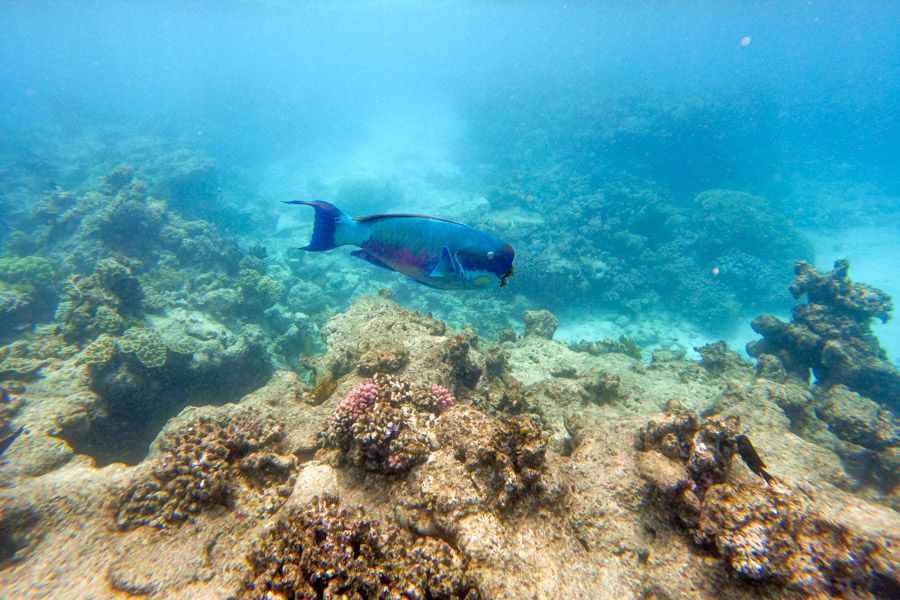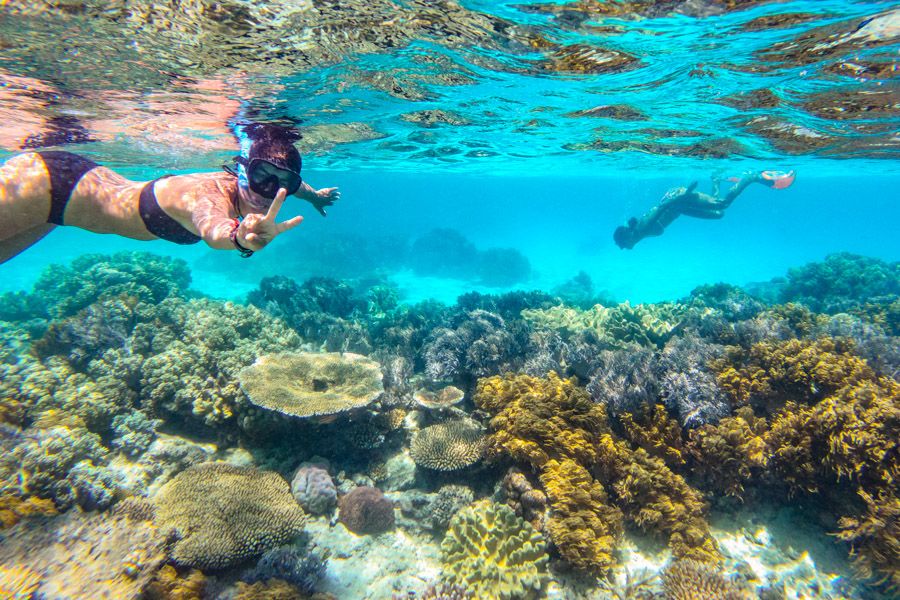Parrotfish On The Great Barrier Reef
Parrotfish in the Great Barrier Reef have distinct features that make them stand out. Their name was derived from their bright colours and mouth that resembles a bird’s beak. However, there’s no one species of this specific animal that looks like another. Parrotfish have made the Great Barrier Reef their home, and divers can easily spot one while snorkeling or scuba diving. Their population is widespread and you’re likely to see them munching on coral in any of the local reef sites near Cairns!

Parrotfish Reef Value and Contribution to Ecosystem
Parrotfish contribute to the coral reef ecosystems because they consume a lot of algae, which usually grows inside coral polyps. Parrotfish need to rip chunks of coral so they can reach the algae. It became a misconception that parrotfish damage coral reefs. However, according to recent studies, they actually help bleached coral recover because they eat the algae that stops new coral growth. It’s just fascinating to know that these colorful creatures provide value to the reef’s ecosystem!

Interesting Parrotfish Facts
Curious to know more about the parrotfish that live on the Great Barrier Reef? We’ve got you covered. Here are some more fun facts about these beautiful fish.
Parrotfish Swap Genders
This might sound weird, but parrotfish change sex as they grow. They usually swap from female to male. As female parrotfish grow bigger, they change into males and challenge other males for the leadership of their group. This is called “protogynous hermaphroditism.” When the process takes place, the color of the parrotfish also drastically changes.
Parrotfish Have Extremely Hard Teeth
The parrotfish makes good use of its hard and strong teeth. They utilize it to chew on coral, and it works effectively because their teeth are fused with their jawbone. Their teeth’s structure is considered stronger than copper, silver, and gold.
Parrotfish Utilize the Full Moon for Mating
Hundreds of parrotfish use the full moon’s light and go through a process called “lek mating.” The males bash their heads together as a sign of defending their territories while the females put on a parade. They spawn sperm and eggs into the water afterward, and the fertilization process takes place.
Parrotfish Create Mucus Sleeping Bags
Some parrotfish species create a transparent cocoon composed of secreted mucus that comes from special glands. They do this before sleeping at night. It helps protect them from parasitic isopods while they sleep. The smell of this mucus also helps mask them from predators such as sharks and eels.

See Parrotfish On The Great Barrier Reef
If you want to enjoy your Great Barrier Reef tour, don’t miss out on dive sites where you can check out colorful parrotfish swimming around. They thrive in locations with intricate coral reefs, and they are always a fun sight to see. While exploring underwater, you can hear the distinct sound of parrotfish nibbling on the algae that rests on coral!
Although you can see different species of parrotfish in multiple locations around the world, Australia’s Great Barrier Reef is one where they truly thrive. The clean sea and the protection of the reef make the Great Barrier Reef a safe haven for multiple species of parrotfish.
Seeing a parrotfish on the reef is worth the dive. You can flaunt it on your Instagram profile as memorabilia of your Great Barrier Reef tour. Australia’s east coast has so much to offer. From day trips, to liveaboard tours, to unique island visits, there is no shortage of fun experiences to be had on the Great Barrier Reef!
See the best of the Great Barrier Reef from Cairns!















